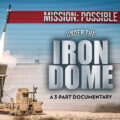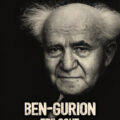In an ever-accelerating world where time is the most valued commodity, short films have carved a significant niche for themselves. The essence of storytelling is concisely captured within a limited timeframe, often leaving a lasting impact. It’s not just the brevity but the potency of the content that makes short films a powerful tool in society. As mentioned, short documentaries can spotlight urgent issues, bringing them to the forefront and galvanizing action. Short films distill narratives into their purest form, engaging audiences with their focused and tight storytelling.
Another unique aspect of short films is their accessibility. Aspiring filmmakers, bereft of the vast resources often associated with feature-length films, can channel their creativity and perspectives into a short film. This democratization of the medium allows diverse voices to emerge, fostering a rich tapestry of stories that may not find space in mainstream cinema.
Let’s pivot to “The Woman Who Wanted to Kill Someone,” directed by Veronica Kedar. This short film is a quintessential example of how compact narratives can be impactful. The film encapsulates a gamut of emotions and questions concerning morality and societal justice within a brief runtime. The intensity of the storyline, combined with captivating performances, hooks the audience. Its audacious subject matter challenges conventional morality, prompting viewers to introspect and engage in dialogue.
For audiences, the experience is both entertaining and thought-provoking. For emerging filmmakers, a film like “The Woman Who Wanted to Kill Someone” serves as a benchmark of what can be achieved within the constraints of a short film.
Moreover, short films often act as stepping stones for filmmakers. They can serve as proof of concept, allowing them to garner attention and, possibly, funding for larger projects. They also present a low-risk avenue for experimentation with storytelling techniques, themes, and visual styles.
In conclusion, the significance of short films, like “The Woman Who Wanted to Kill Someone,” lies not only in their narrative efficiency but also in their potential to be harbingers of change and nurseries of cinematic innovation. They embody the adage that sometimes less is indeed more. Through short films, society gains a vehicle for education, entertainment, and the proliferation of diverse voices and stories.
















